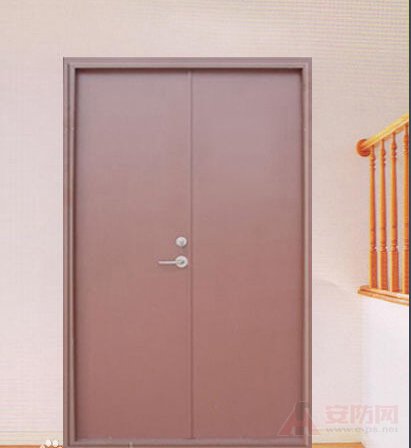[ Huaqiang Security Network News ] 
The difference between the anti-theft door and the fire door is that the main function of the anti-theft door is that the anti-smashing sealing performance is better. Generally, the door cannot be opened without a key outside the door, and the filler in the door panel is not a fireproof material. The security door must have the "FAM" mark and refer to the general technical condition GB17565-2007 of the security door. Although the fire door is also made of steel, but the door panel is filled with fireproof material, the thickness of the door steel plate also has different requirements. The steel door is an ordinary steel door. It also has a certain anti-theft function, but the anti-smashing performance is relatively poor. The general street processing factory is this type.

Only Shanghai and Chengdu have local standards for fire-resistant security doors. In other places, they can only be called fire-proof entrance doors, that is, they can reach the national fire-proof Class A or Class B fire door standards, and (with fire door cores) Class A and Class B standards. Generally divided by anti-burning time. At the same time, the flood prevention requirements are achieved in the following aspects:
The thickness of the door frame is 1.5, and the thickness of the front and back of the door leaf is 0.8.
The lock has anti-smashing function, that is, the lock body has both the oblique locking tongue and the square locking tongue, and has a quick opening function, and is the best in the twisting type, but the heaven and earth lock is not allowed.
Both the lock and the cat's eye shall have a fire detection report, and the Class B fireproof entry door may be fitted with a door collar. Class A is not allowed to be installed.
At the time of acceptance, the merchant shall provide a fireproof type approval certificate, a fire detection report, and a metal entry door inspection report. Fire detection report for locks and cat eyes.
The door opening direction is a fast evacuation direction and cannot be opened inside.
Wooden insulated fire door
This standard specifies the product classification, specification size, technical requirements, test methods, inspection rules, label packaging, transportation and storage of wood insulated fire doors. This standard applies to fire doors that use wood or wood products as door frames, door leaf frames, and door leaf panels.
The difference between electronically controlled fire doors and ordinary fire doors:
difference:
Emergency and statistical functions, the system can automatically display the physical location of the designated cardholder on the computer, which is convenient for timely contact.
In the event of an emergency such as a fire, the electronically controlled fire door will automatically open for easy escape, and the entrance and exit can also be automatically opened; when an illegal entry or exit occurs, it will automatically alarm;
Wooden insulated fire door national standard
Wood insulated fire doors refer to wood or wood products used as door frames, door leaf frames, door leaf panels, door panels filled with thermal insulation materials or wooden doors made of wood or wood products as door frames and door leaves. Class A can also be installed on the door leaf. The composite fireproof glass and the door leaf are provided with a bright window composed of a door frame and a type A composite fireproof glass, and are equipped with fireproof hardware components to meet the fire integrity and heat insulation.
Wood insulated fire doors are classified into Class A, Class B and Class C according to fire resistance. The fire resistance requirements are 90min, 60min and 30min respectively. The wood used for making solid wood fire doors needs to be dried and flame retarded. The water content should not exceed 12%. When restricted by conditions, the moisture content during production should not be greater than the local equilibrium moisture content.
The hardware accessories used for wood insulated fire doors must be fire resistant hardware accessories. The main hardware accessories are: fire hinges (hinge), fireproof bolts, fire door locks, fire sequencers and fire door closers.
Fire resistance of wood-insulated fire doors In the case of fire resistance testing, wood-insulated fire doors shall be able to meet the conditions specified in the standard within the time required for their fire resistance.
1 integrity:
There is no flame that burns continuously for more than 10s on the backfire surface;
If there are cracks, holes or other voids on the backfire surface and there is no flame, the combustibles at a distance of 20mm~30mm from these pores shall not be ignited within 10s~30s;
The sample should not collapse.
2 insulation:
When the average temperature rise of the temperature measurement point on the solid wood fire door reaches 140 °C or the temperature rise of any temperature measurement point reaches 180 °C, the insulation loss is judged.
When conducting product consistency checks on site, the following should be checked:
1. Whether the appearance of the product is consistent with the standard requirements;
2. Whether the product identification is consistent with the standard requirements;
3. Whether the product structure is consistent with the test report;
4. Whether the material of the product is consistent with the test report;
5. Whether the performance parameters of the product are consistent with the test report.
Ball Valve,Universal Ball Valve,3 Way Ball Valve,Ball Float Valve
Chongqing Xingjida Import and Export Trade Co., Ltd. , https://www.xjdvalve.com